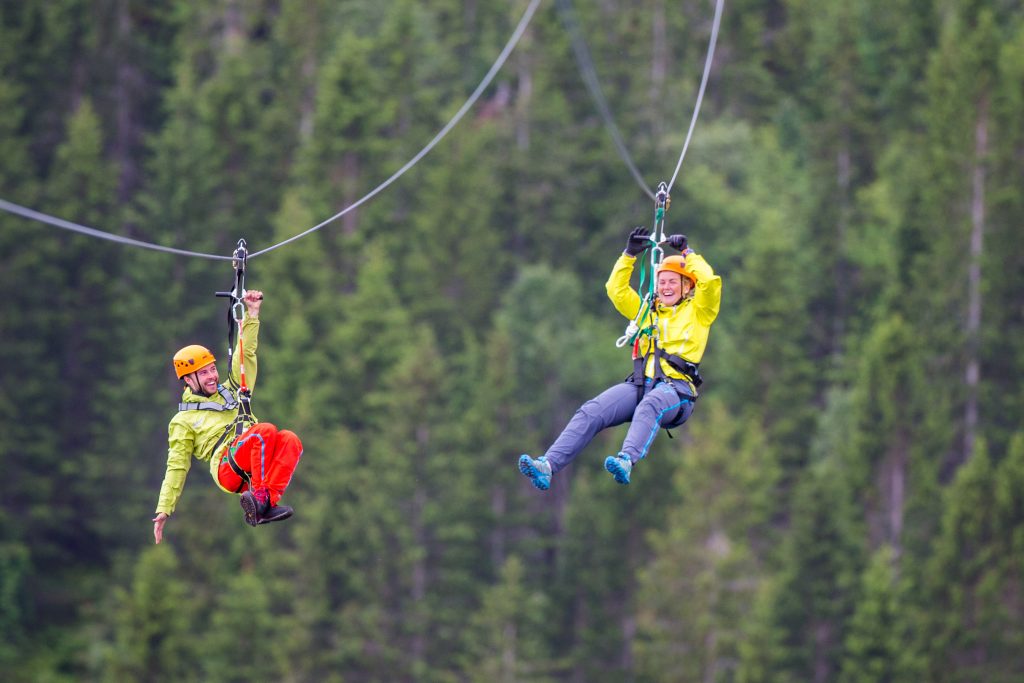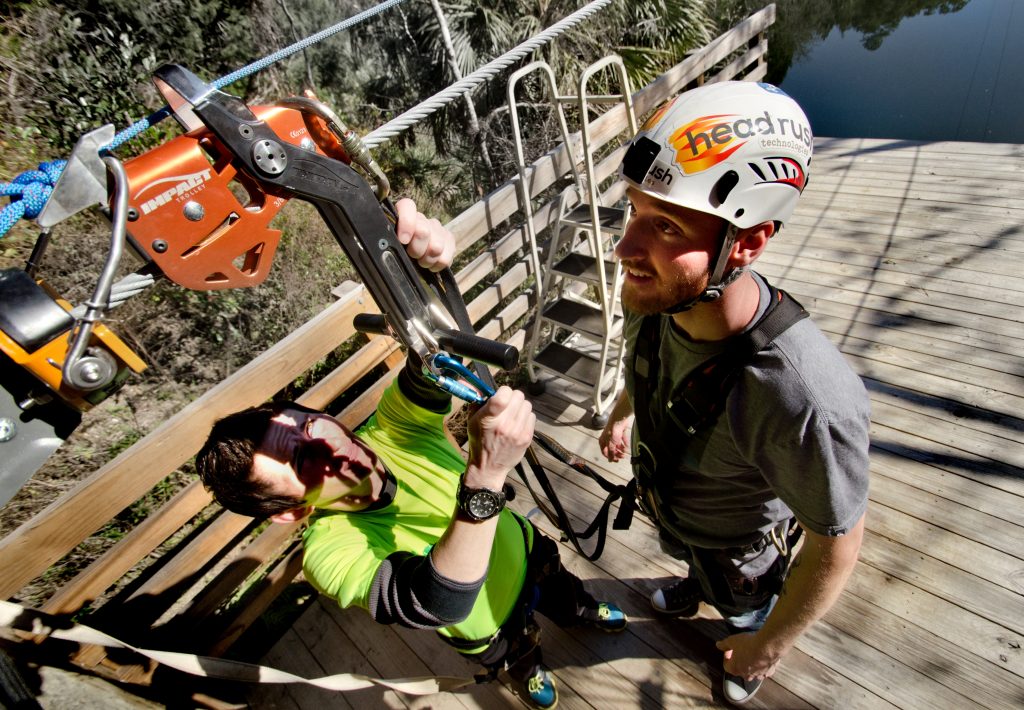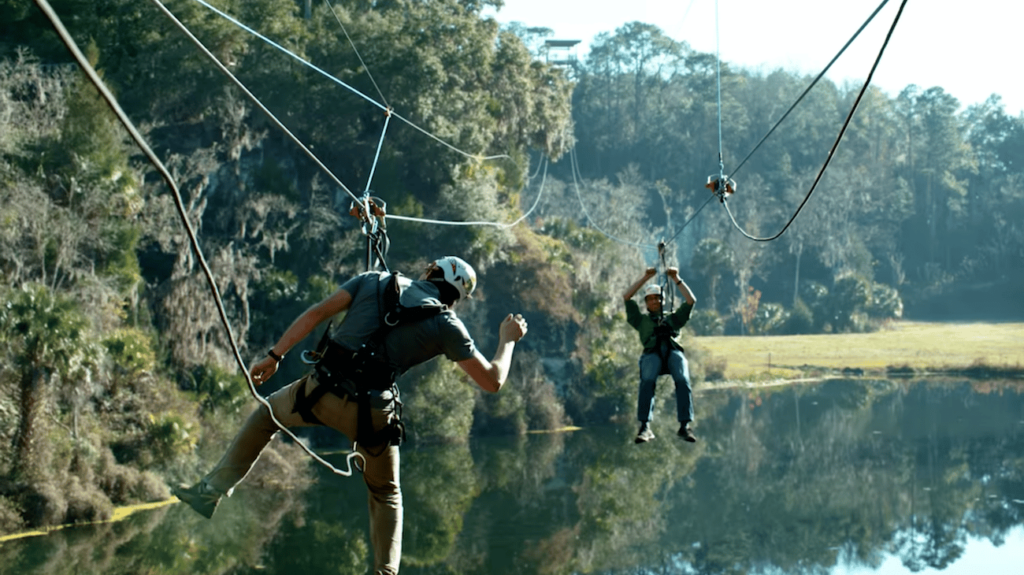Our goal at Head Rush is to help create the best rider experiences and to improve operations for climbing facilities, adventure providers, and zip line operators. The zipSTOP Zip Line brake came to be when we saw an opportunity to create a braking experience that is hands-free for the rider while also easy and efficient for zip line guides.
The zipSTOP Zip Line Brake allows riders to enjoy the ride without having to worry about braking at the end of the line. Guides don't have to engage or reset the brake, so they are able to focus on providing the best guest experience possible.
We didn't stop with just a braking device, though. To create the best braking system possible, Head Rush has also created zip line trolleys, Gorilla Rope for use as reduction lines, and high-performance pulleys. All of these products together create the best zip line braking experience possible for your zip line installation.
Video Transcription
At Head Rush Technologies, we know that as a zip line owner and operator you want the highest performance possible from your zip line. What you may not realize is that there are many ways that you can tweak and configure your installation in order to create optimal performance. For the highest through-put and profitability and best rider experience, it's essential to install all elements of your zip line properly. Head Rush Technologies recommends consulting with a zip line builder or engineer during your installation process and checking for the following factors to ensure the best performance from your zip line.
The first thing to address in your installation is your reduction line. The zipSTOP manual mandates that your rope is a maximum of 10mm in diameter, a minimum of 15kN in strength, stretch less than 3% when 15kN of force is applied, be abrasion, water, and UV resistant, and consist of Kernmantle, or single braided construction. There are many ropes out there, and recognizing that it may be difficult to find the perfect rope that combines all these elements, we have created the Gorilla Rope.
The Gorilla Rope was designed specifically to meet these requirements and outperforms its competitors for use with impact braking where a redirection point is required. One of the Gorilla Rope's strengths is that it's highly hydrophobic, a specialized sheaf repels water, leaving the Gorilla Rope unaffected when used in wet environments. You can see that when soaked in water the Gorilla Rope does not retain water, unlike many of its competitors. This is an important feature, as water affects the behavior of your rope and can negatively impact your braking performance and create an unreliable and potentially unsafe braking scenario.
Once you have a redirection line chosen, it's important to match it with the correct pulley. Most pulleys used in the zip lining industry are not designed for high-speed performance. Many have large gaps on either side of the sheaf or places where the rope can slip or get caught. Our redirection pulley design is based on pulleys used in the stunt industry, where high-speed performance is often required. Our pulley is designed to fit our Gorilla Rope perfectly and eliminates gaps where the rope can get caught to ensure that your redirection line always remains in the correct position for optimum performance.
After choosing your redirection rope and pulley, take note of how much slack is allowed in your redirection rope once installed. Too much slack will cause an abrupt and uncomfortable stop for your rider. The right amount of slack will equate to better customer experience for your visitors and more consistent braking between visitors of different weights and sizes. Finally, it's important to check that the components of the zipSTOP itself are set up properly. Here you can see there's a twist in the webbing brake line, which will interfere with optimal performance. You should install your zipSTOP to avoid any twisting of or interference with your webbing line. When you set up your zipSTOP brake system with these things in mind, you'll allow for the most optimal performance for your zip line braking installation.
You can see that the line to the left is set up and installed properly with the correct components, while the line to the right has a thick, damp, sagging redirection rope, a large amount of slack, a large pulley, and a twisted zipSTOP brake webbing. Now observe as the rider on the right stops abruptly and uncomfortably with the redirection rope swinging wildly around him, while the rider on the left experiences a smooth, comfortable braking sensation. It's clear to see that when you take the time to ensure an ideal installation the outcome is visibly positive for your business.
To learn more about the best braking installation and component options for your zip line, call us at 720-565-6885 or visit us on the web at headrushtech.com.



